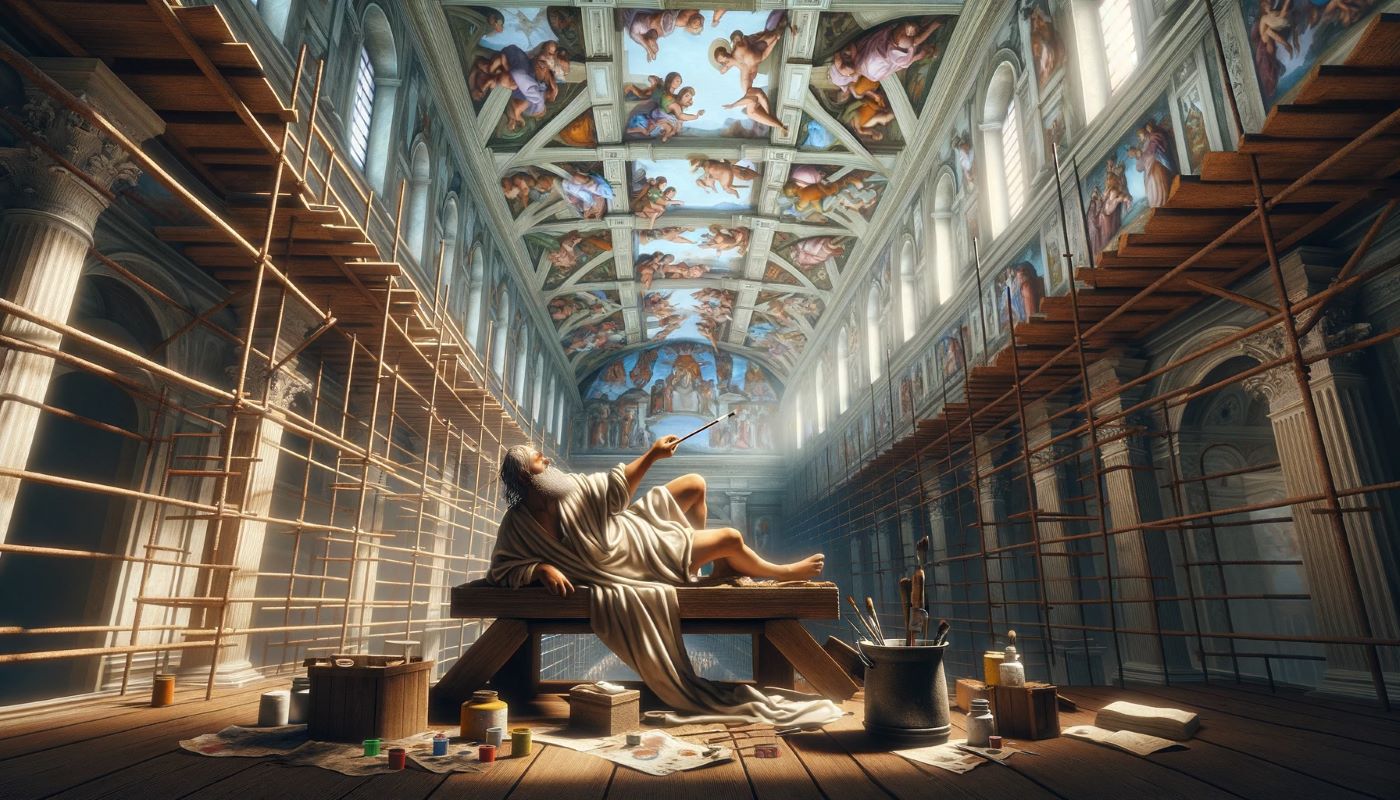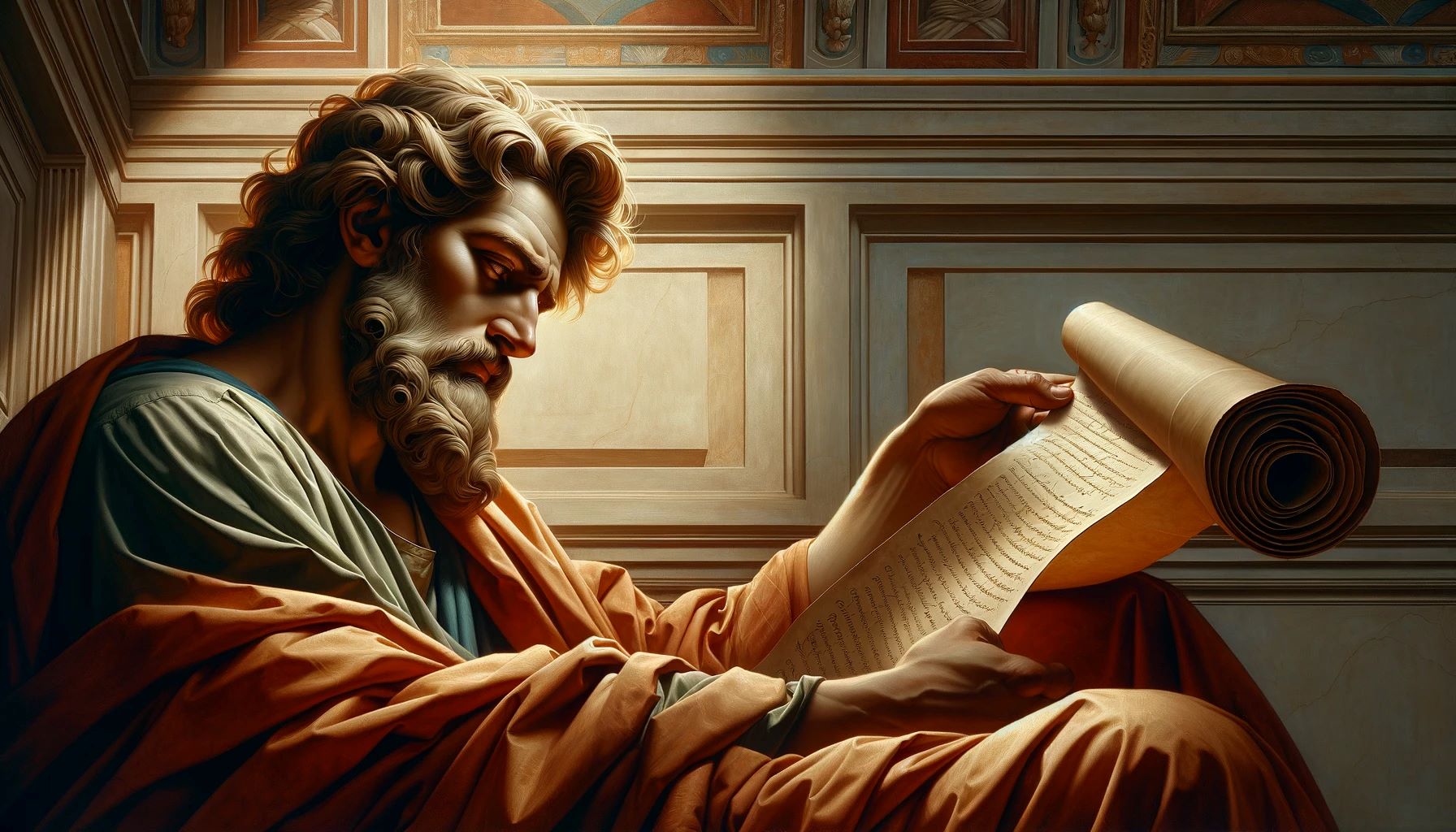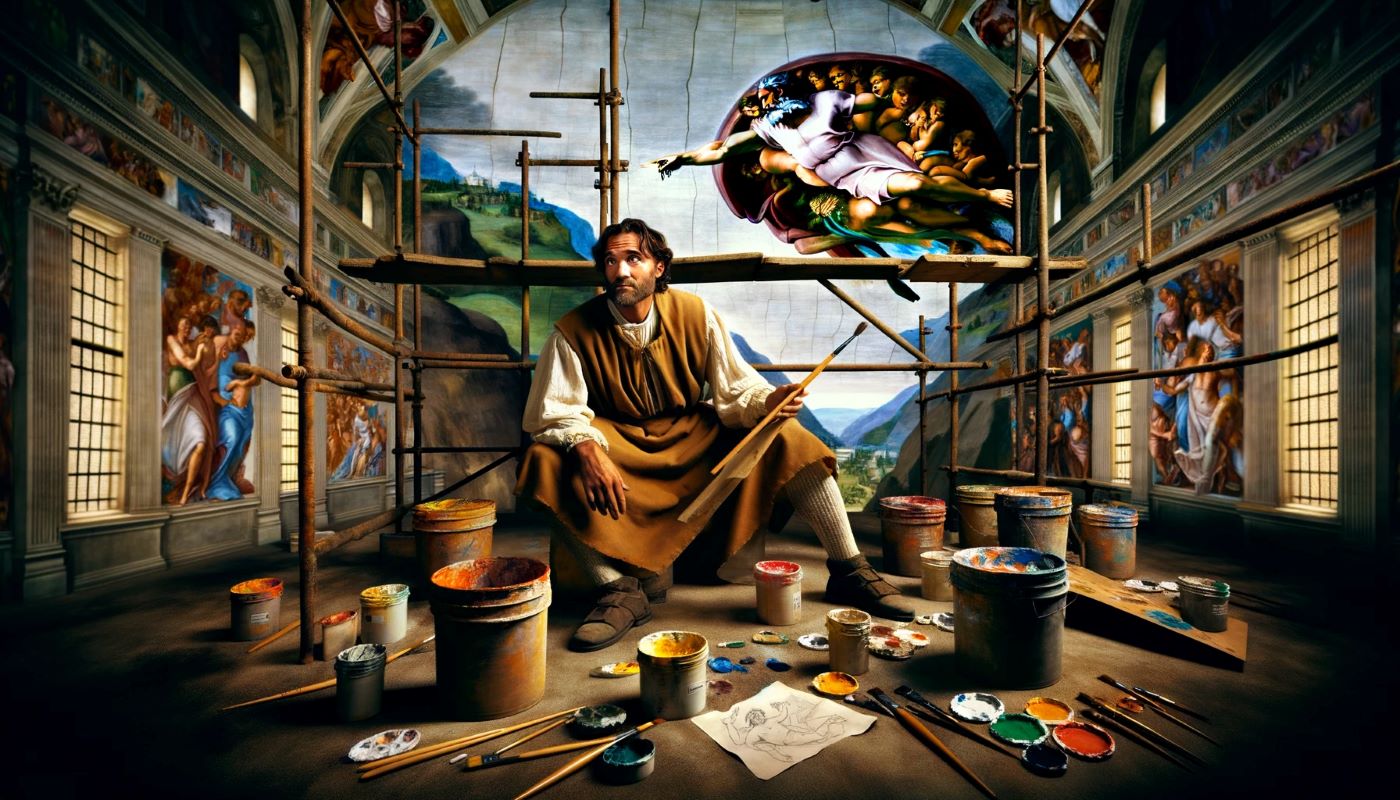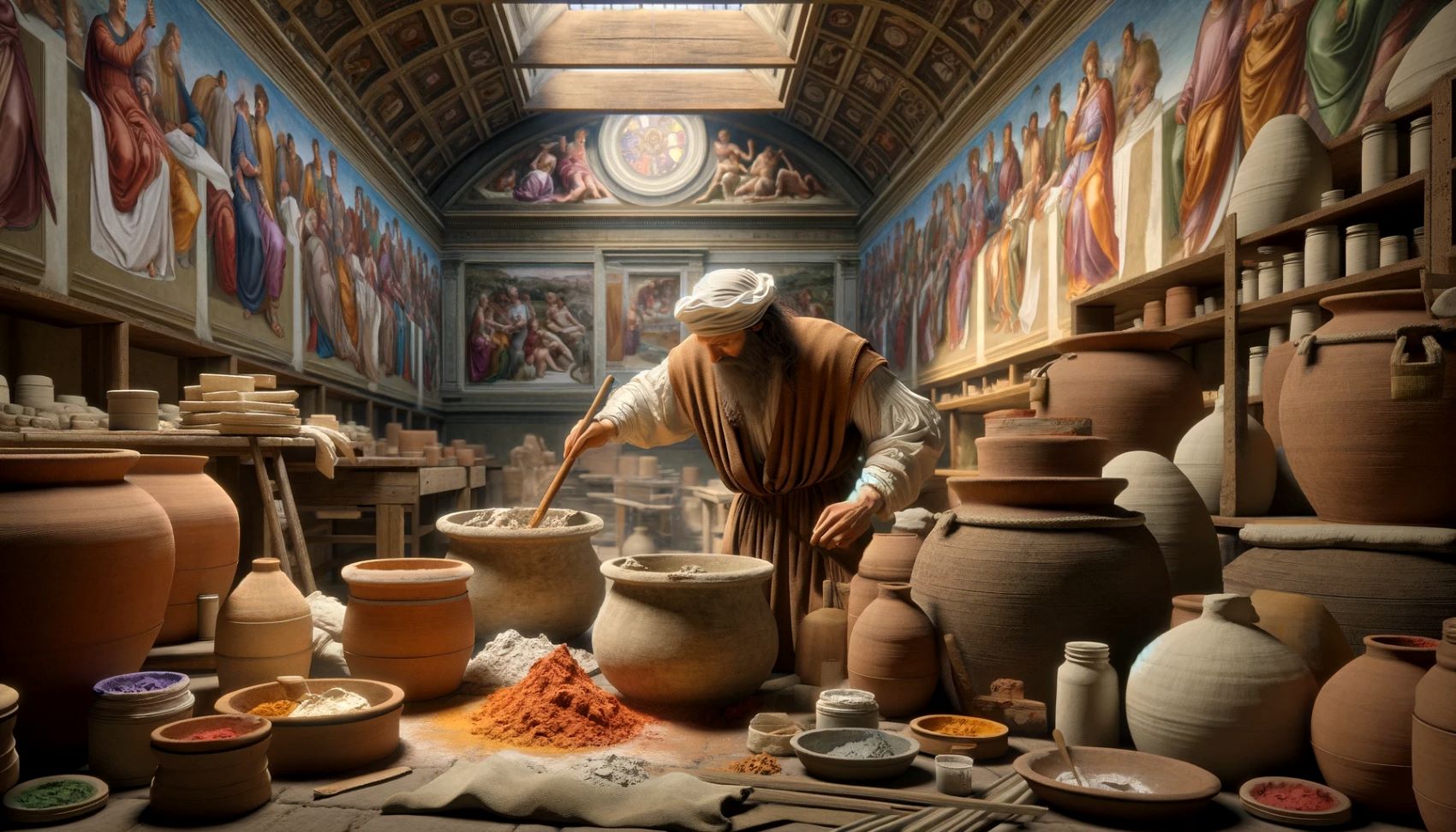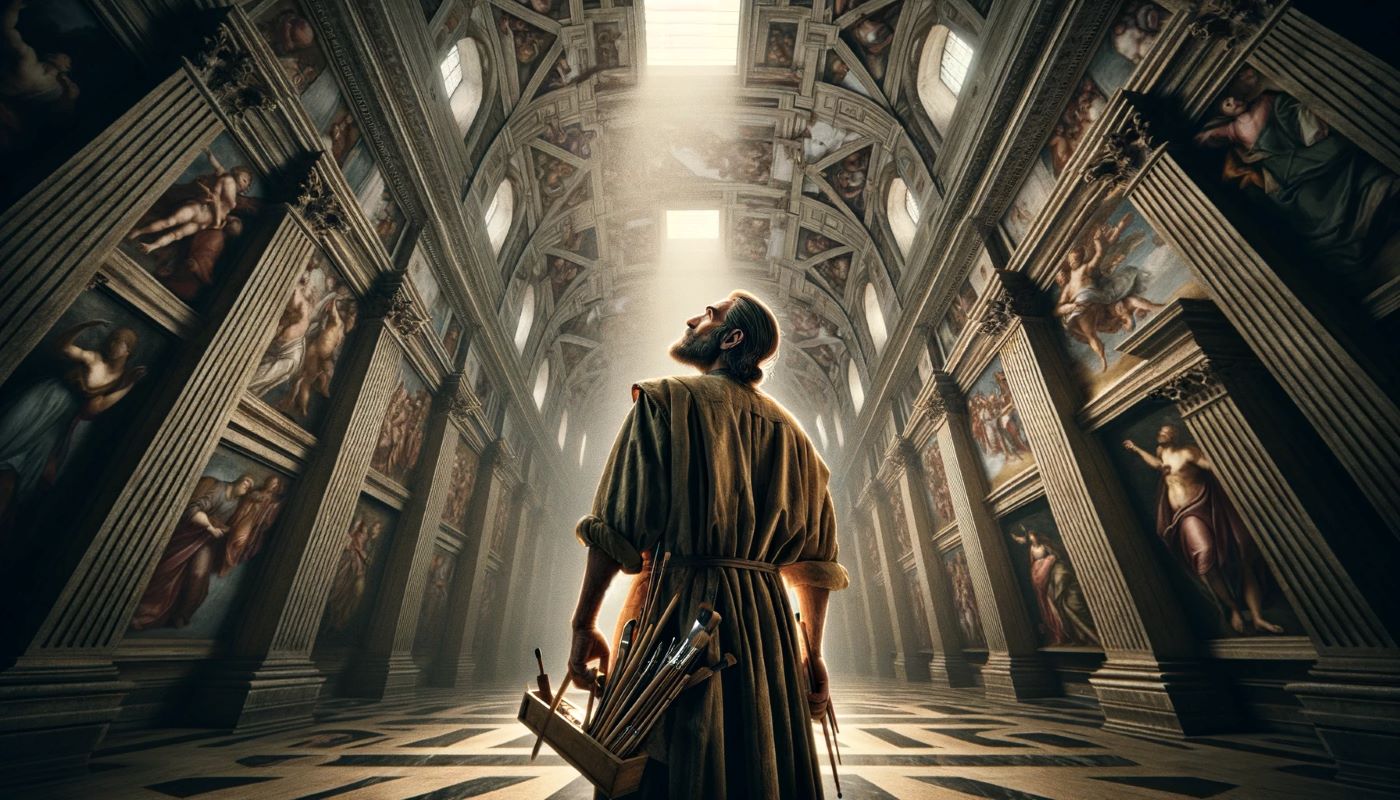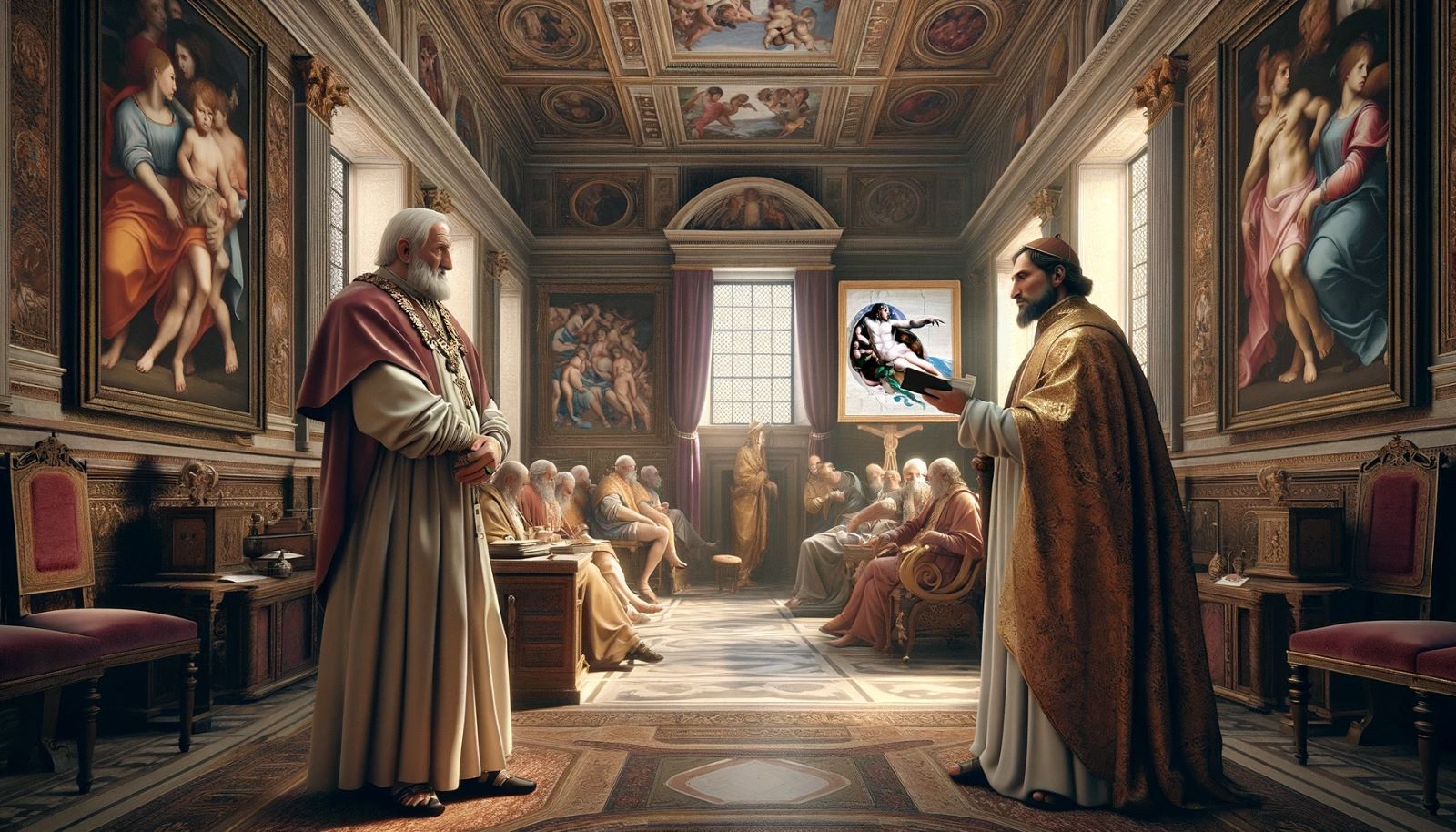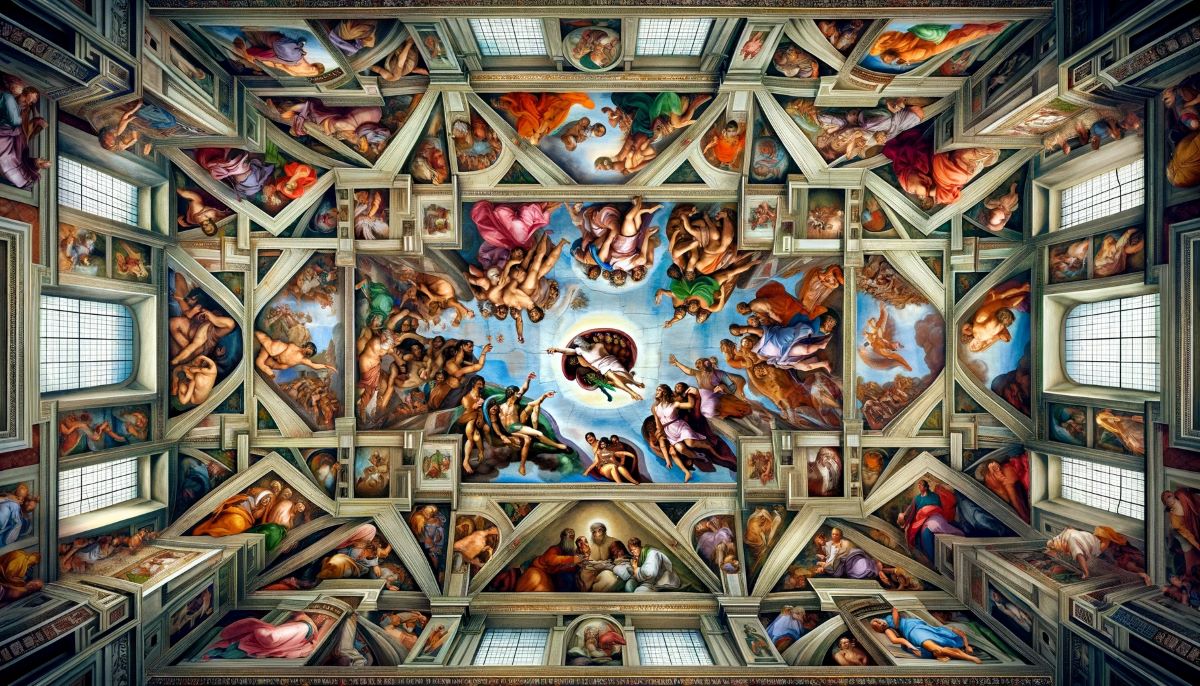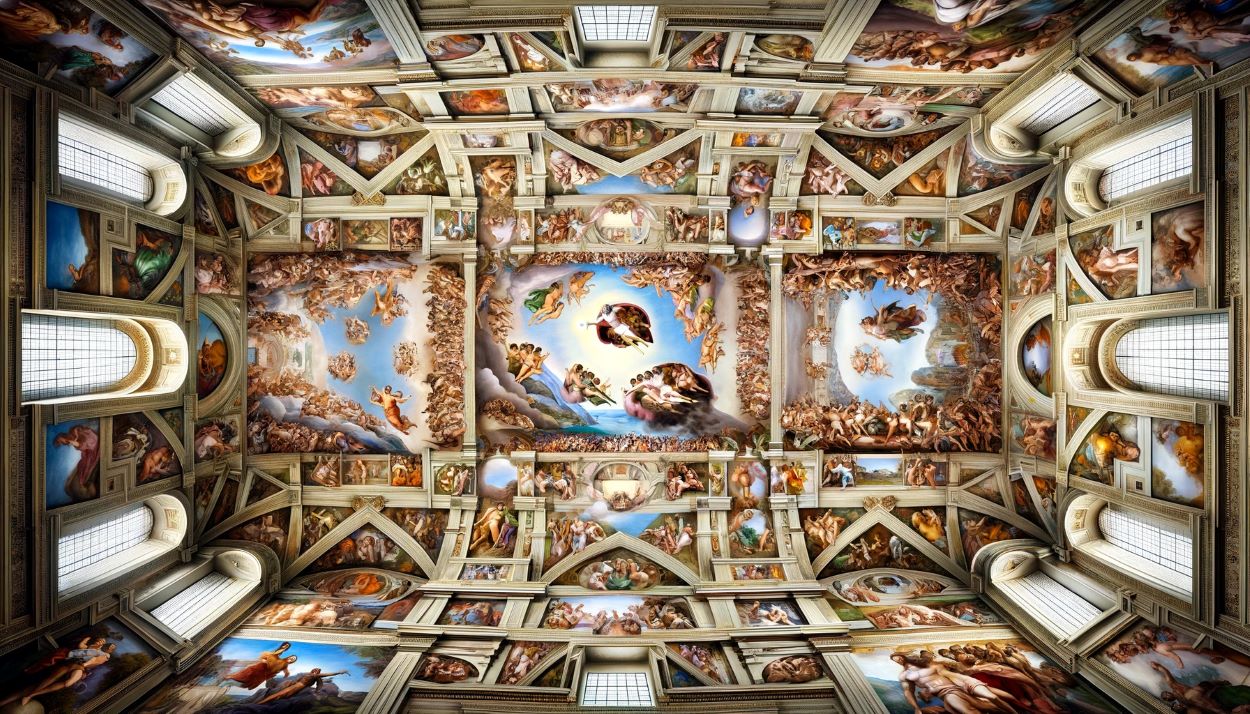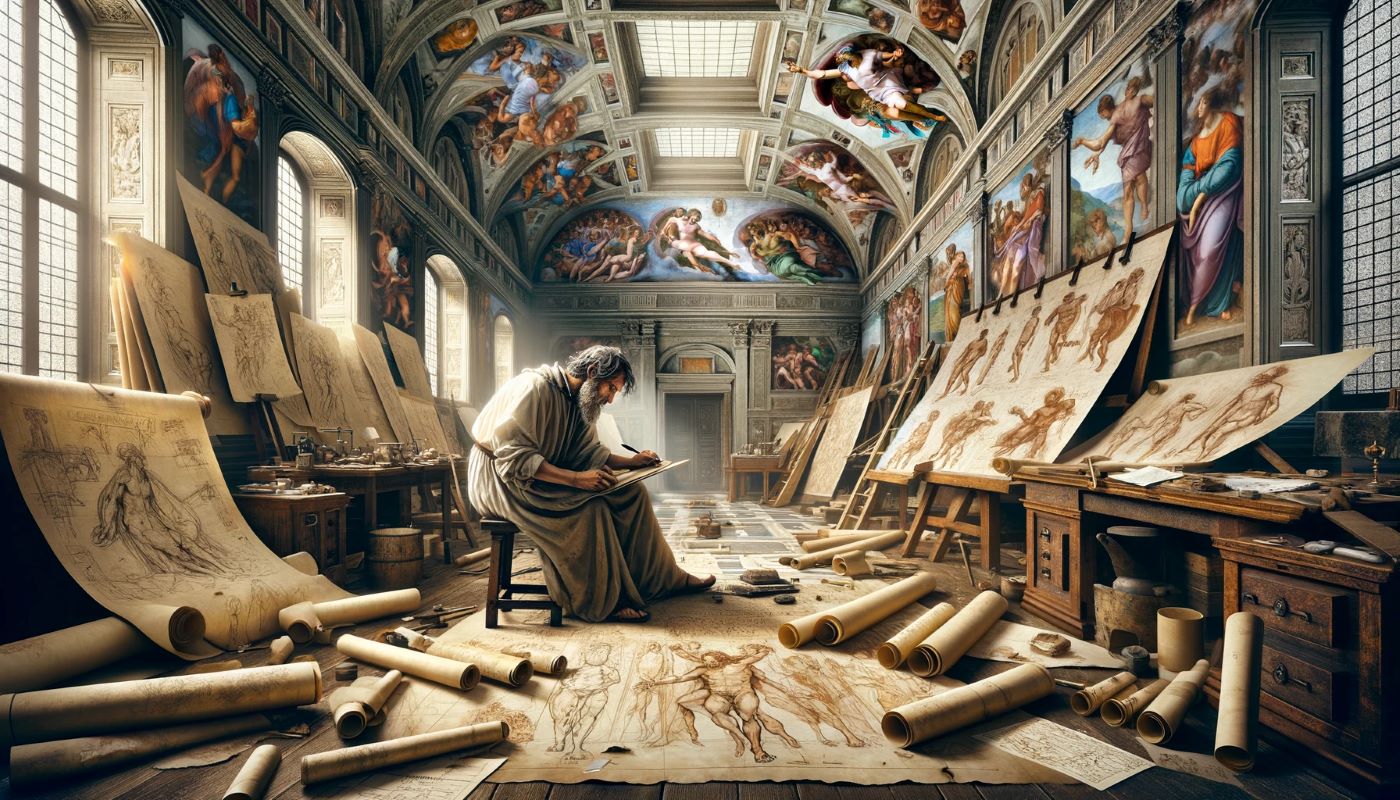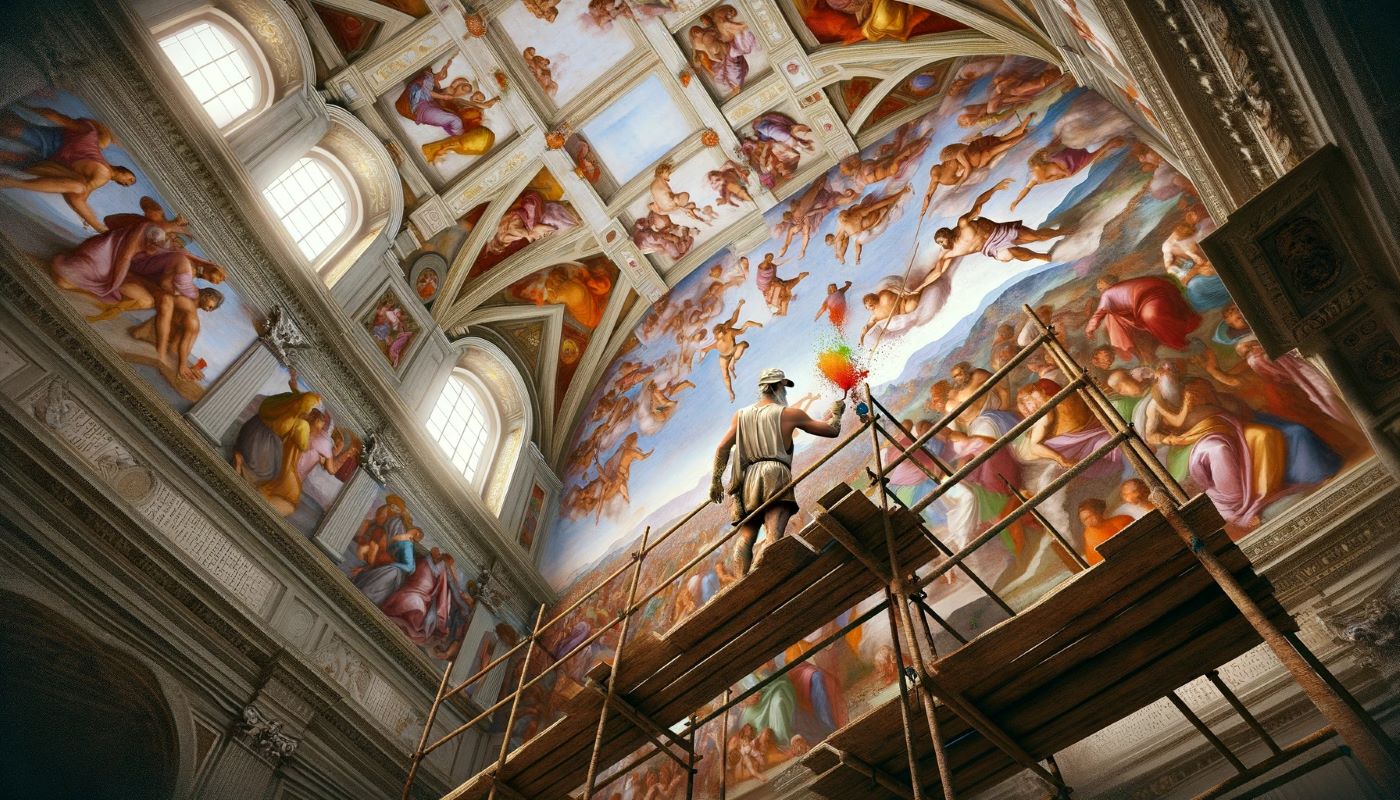Home>Arts and Culture>When Did Michelangelo Paint Sistine Chapel
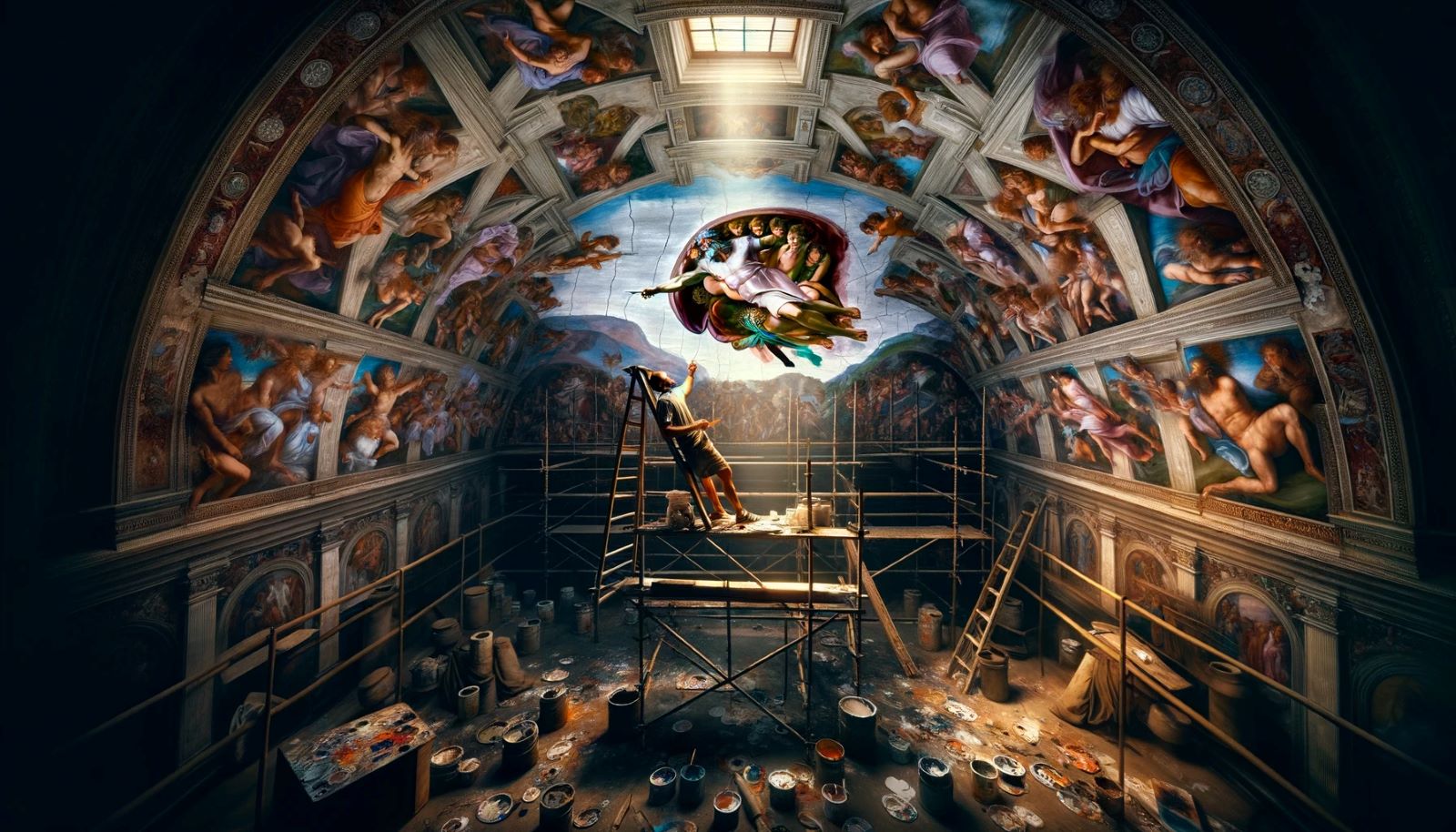

Arts and Culture
When Did Michelangelo Paint Sistine Chapel
Published: March 4, 2024
Peter Smith, Editorial Director at Christian.net, combines deep insights into faith, politics, and culture to lead content creation that resonates widely. Awarded for his contributions to religious discourse, he previously headed a major organization for religious communicators, enhancing dialogue on faith's societal impacts.
Discover the history behind Michelangelo's iconic Sistine Chapel masterpiece and its impact on arts and culture. Learn about the creation of this renowned artwork.
(Many of the links in this article redirect to a specific reviewed product. Your purchase of these products through affiliate links helps to generate commission for Christian.net, at no extra cost. Learn more)
Table of Contents
Introduction
When did Michelangelo paint the Sistine Chapel? This question has intrigued art enthusiasts and historians for centuries. The creation of the Sistine Chapel ceiling is a remarkable feat that has left an indelible mark on the world of art and religion. In this article, we will delve into the fascinating journey of Michelangelo's work on the Sistine Chapel, exploring the commission, the process and techniques he employed, the completion and unveiling of the masterpiece, and the enduring legacy it has left behind. So, let's embark on a journey through time to uncover the story behind one of the most iconic artistic achievements in history.
Michelangelo's Commission for the Sistine Chapel
-
Commissioned by Pope Julius II: In 1508, Pope Julius II commissioned Michelangelo to paint the ceiling of the Sistine Chapel. The pope was inspired by the desire to restore the grandeur of the chapel, which had been deteriorating over the years. He recognized Michelangelo's exceptional talent and believed that he was the perfect artist to undertake this monumental task.
-
Reluctance and Persuasion: Initially, Michelangelo was reluctant to take on the project, as he considered himself a sculptor rather than a painter. However, after much persuasion from the pope, he eventually agreed to embark on this ambitious endeavor, marking the beginning of a transformative chapter in the history of art.
-
Artistic Freedom: One of the remarkable aspects of the commission was the degree of artistic freedom granted to Michelangelo. The pope entrusted him with the creative liberty to envision and execute the ceiling according to his artistic vision. This level of autonomy was uncommon during that period and allowed Michelangelo to unleash his full creative potential.
-
Spiritual Significance: The Sistine Chapel held immense spiritual significance as the site of papal ceremonies and the election of new popes. Thus, the commission was not merely an artistic undertaking but also a profoundly religious and symbolic endeavor, with the potential to inspire and uplift the faithful through the power of visual art.
-
Historical Significance: The commission of the Sistine Chapel ceiling marked a pivotal moment in the Renaissance era, as it brought together the realms of religion, art, and patronage. It set the stage for one of the most extraordinary artistic achievements in history, elevating the status of the Sistine Chapel to an unparalleled cultural and spiritual landmark.
Michelangelo's Process and Techniques
-
Preparation and Planning: Before commencing the monumental task of painting the Sistine Chapel ceiling, Michelangelo engaged in meticulous preparation and planning. He studied the architectural structure of the ceiling and devised a strategic approach to execute his artistic vision. This phase involved extensive contemplation and conceptualization, as he envisioned the harmonious integration of religious narratives and artistic expression within the chapel's sacred space.
-
Scaffolding and Physical Strain: To access the ceiling, Michelangelo constructed a complex scaffolding system, allowing him to work at the considerable height of the chapel. This physically demanding endeavor required immense strength and endurance, as he spent long hours suspended above the ground, meticulously applying his brushstrokes with precision and care. The arduous nature of this process underscored Michelangelo's unwavering dedication to realizing his artistic masterpiece.
-
Innovative Techniques: Michelangelo's innovative techniques revolutionized the art of fresco painting. He employed a method known as "buon fresco," in which pigments are applied directly onto wet plaster, allowing the colors to permeate and become an integral part of the wall or ceiling. This technique required exceptional skill and expertise, as any errors made during the painting process were irreparable once the plaster dried. Michelangelo's mastery of this technique enabled him to achieve a remarkable level of detail and vibrancy in his compositions.
-
Iconic Imagery and Symbolism: Through his masterful brushwork, Michelangelo brought to life a rich tapestry of iconic imagery and profound symbolism on the Sistine Chapel ceiling. From the creation of Adam to the Last Judgment, each panel conveyed intricate narratives and theological themes, transcending the boundaries of traditional artistic representation. His ability to infuse each figure and scene with emotional depth and spiritual resonance exemplified his unparalleled artistic prowess.
-
Emotional and Spiritual Expression: Michelangelo's process was not merely a technical exercise but a profound channel for emotional and spiritual expression. His deep reverence for the subject matter imbued his work with a transcendent quality, evoking a sense of awe and reverence in those who beheld his creations. The interplay of light and shadow, the dynamic poses of the figures, and the evocative facial expressions all contributed to the immersive and emotive nature of his artistic compositions.
-
Enduring Influence: Michelangelo's process and techniques continue to inspire and captivate artists and art enthusiasts to this day. His innovative approach to fresco painting, coupled with his unparalleled ability to imbue his works with profound meaning and emotion, solidified his legacy as a visionary artist whose impact transcends the boundaries of time and space. The enduring allure of the Sistine Chapel ceiling stands as a testament to the enduring power of Michelangelo's process and techniques.
Completion and Unveiling of the Sistine Chapel
-
Culmination of Herculean Effort: After years of unwavering dedication and artistic labor, Michelangelo completed the breathtaking frescoes adorning the ceiling of the Sistine Chapel in 1512. The culmination of this herculean effort marked a pivotal moment in the history of art and religion, as the chapel was poised to unveil a masterpiece that would captivate the world.
-
Revelation to the Public: The completion of the Sistine Chapel ceiling heralded a momentous occasion as the public eagerly anticipated the revelation of Michelangelo's magnum opus. The unveiling of the meticulously crafted frescoes was met with profound awe and admiration, as spectators marveled at the sheer grandeur and artistic brilliance that adorned the sacred space.
-
Profound Impact and Reverence: The unveiling of the Sistine Chapel ceiling left an indelible impact on all who beheld its splendor. The profound reverence evoked by Michelangelo's masterful compositions transcended the boundaries of artistic appreciation, stirring the souls of those who gazed upon the divine imagery that graced the chapel's vaulted ceiling.
-
Elevation of Spiritual Experience: The completion and unveiling of the Sistine Chapel elevated the spiritual experience within its hallowed confines. The harmonious fusion of art and faith created an immersive environment that transported visitors to a realm where the divine and the human intersected, fostering a profound sense of contemplation and spiritual introspection.
-
Enduring Legacy: The unveiling of the Sistine Chapel solidified its status as a cultural and religious landmark of unparalleled significance. Michelangelo's masterwork became a timeless testament to the transcendent power of art, inspiring generations to come and leaving an enduring legacy that continues to resonate with visitors from across the globe.
-
Celebration of Artistic Triumph: The completion and unveiling of the Sistine Chapel represented a triumphant celebration of artistic ingenuity and creative vision. Michelangelo's unparalleled achievement reverberated throughout the annals of art history, cementing his legacy as a visionary whose contributions transcended the confines of his era, leaving an indelible mark on the world of art and culture.
-
Continued Reverence and Admiration: The completion and unveiling of the Sistine Chapel continue to evoke reverence and admiration in contemporary times. The enduring allure of Michelangelo's masterwork serves as a testament to the enduring power of artistic expression and its capacity to transcend the limitations of time, resonating with each successive generation that has the privilege of experiencing its profound beauty.
Legacy of Michelangelo's Sistine Chapel
-
Artistic Inspiration: Michelangelo's Sistine Chapel ceiling stands as a timeless source of artistic inspiration, influencing countless artists across the centuries. Its innovative techniques, masterful compositions, and profound emotional resonance have continued to captivate and motivate aspiring artists, serving as a benchmark of artistic excellence and creativity.
-
Cultural Icon: The Sistine Chapel has transcended its religious significance to become a global cultural icon. Its enduring legacy extends beyond the confines of the Vatican, permeating popular culture, literature, and the collective consciousness of humanity. The imagery adorning its ceiling has become synonymous with the pinnacle of artistic achievement, perpetuating its influence in diverse spheres of human expression.
-
Spiritual Reverence: The Sistine Chapel remains a sacred sanctuary of spiritual reverence, drawing pilgrims and visitors from around the world to behold its awe-inspiring beauty. The fusion of religious narratives and artistic grandeur has transformed the chapel into a transcendent space where the divine and the human converge, evoking profound contemplation and spiritual introspection.
-
Architectural Marvel: Beyond its artistic significance, the Sistine Chapel stands as an architectural marvel, showcasing the grandeur of Renaissance design and craftsmanship. Its vaulted ceiling, adorned with Michelangelo's timeless frescoes, represents a harmonious union of art and architecture, exemplifying the transformative power of human creativity in shaping the physical and metaphysical realms.
-
Educational Resource: The Sistine Chapel serves as an invaluable educational resource, offering a visual tapestry of biblical narratives, historical symbolism, and artistic techniques. Its enduring relevance as a pedagogical tool enables scholars, students, and enthusiasts to delve into the depths of art history, religious iconography, and the evolution of artistic expression through the ages.
-
Global Symbol of Beauty and Excellence: Michelangelo's Sistine Chapel has become a global symbol of beauty, excellence, and the boundless potential of human creativity. Its enduring allure transcends cultural boundaries, resonating with individuals from diverse backgrounds and beliefs, uniting them in appreciation of the transcendent power of art to elevate the human spirit.
-
Preservation of Cultural Heritage: The preservation of the Sistine Chapel and its artistic treasures underscores the collective commitment to safeguarding humanity's cultural heritage. Efforts to conserve and protect this iconic masterpiece ensure that future generations will have the opportunity to experience and be inspired by Michelangelo's unparalleled contribution to the world of art and spirituality.
In essence, the legacy of Michelangelo's Sistine Chapel endures as a testament to the transformative power of art, the enduring resonance of spiritual expression, and the timeless capacity of human creativity to transcend the limitations of time and space.
